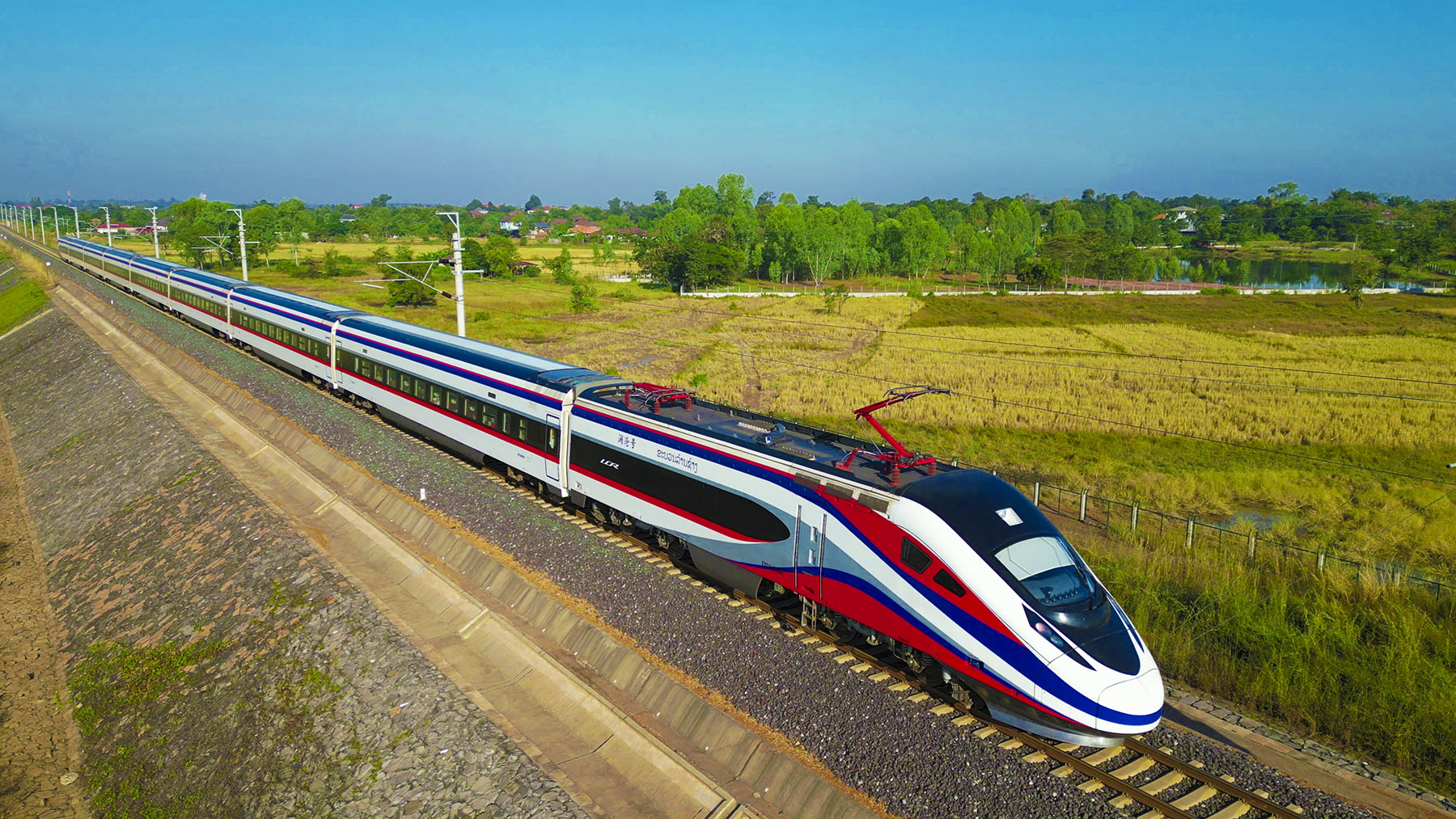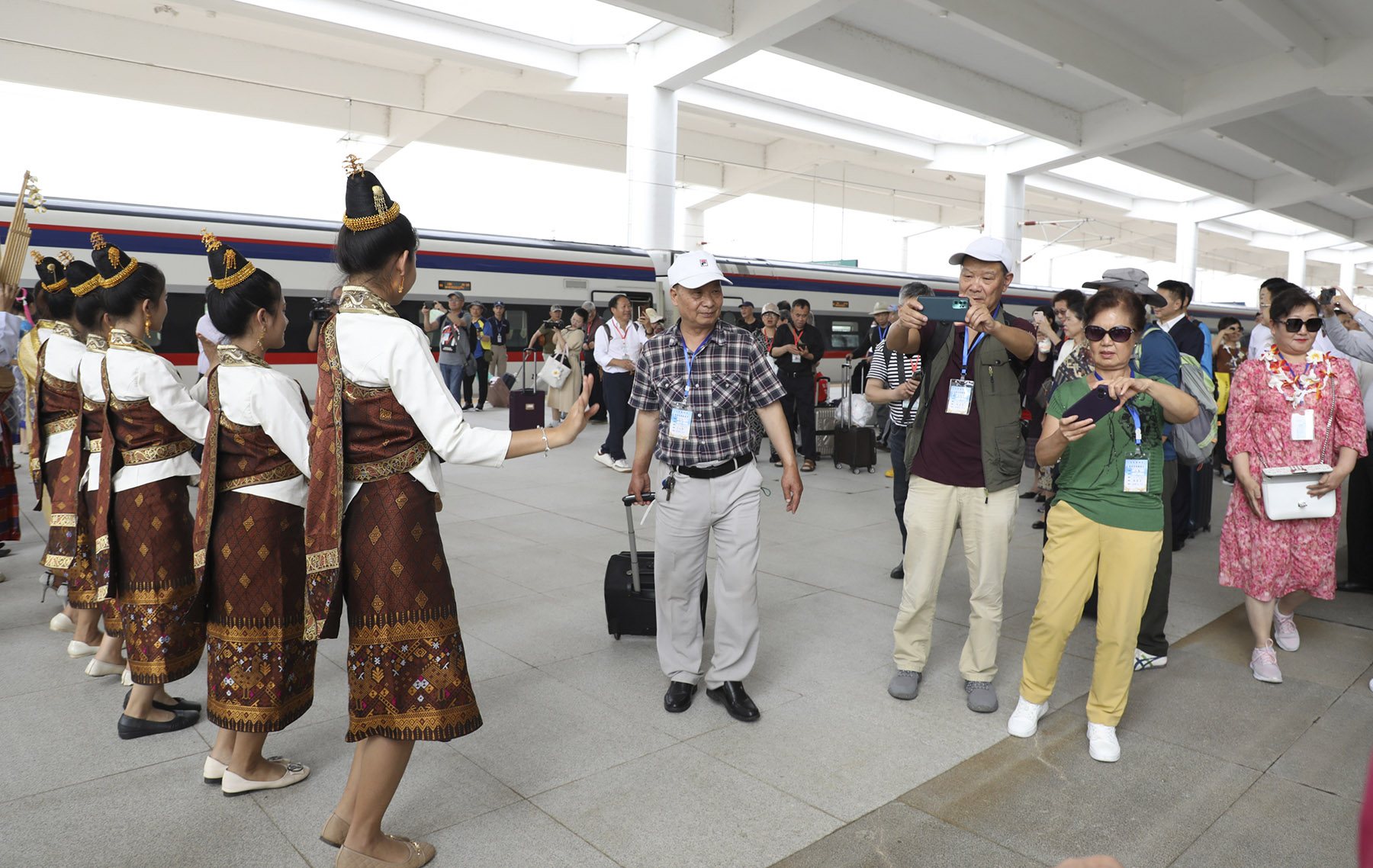Official's personal history sheds additional light on Beijing's increasingly vital role in regional development

For Keomorakoth Sidlakone, assistant to Laos' minister of industry and commerce, China is not only a friendly neighbor and essential economic partner, but also a country with which he has deep personal connections.
Sidlakone first visited China in 1970 at the age of six. "Between 1967-75, the United States invaded the Indochina Peninsula, and the Chinese government helped Lao revolutionary family members continue their education in Nanning in the Guangxi Zhuang autonomous region. Around 2,000 children, including myself, went to live in China as US bombs were dropped in our country," said the now 60-year-old Sidlakone.
The school where they studied, Junior 67 School, opened in 1967 as the result of a joint decision by Laos and China. It later expanded to include kindergarten and primary school classes from grades one to six, and accommodated Lao teachers and students.
"I lived in Nanning for five years, from 1970 to 1975," Sidlakone said.
"At school, we studied in Lao, but the facilities and logistics were supported by the Chinese government.After graduating from the Junior 67 School, I returned home to continue my high school education. At present, the Guangxi Party Committee and local government are preserving the Junior 67 School as a provincial memorial."
READ MORE: Chinese hotel operators expand overseas presence
Reflecting on this past, Sidlakone emphasized his deep connection with China.
"From my perspective, I feel that China is a very close and long-standing friend to Laos. I have never forgotten its support during difficult times," he said.
"The Chinese government supported Laos in many ways, not only in terms of economics but also education, agriculture and other fields.Many Lao students received scholarships to study in China, and when they returned, they brought valuable experience back to Laos. Many high-level officials in the Lao government were recipients of scholarships from China."

China and Laos share a strong and friendly relationship because of several key factors, including geographical proximity, historical ties and mutual economic interests, he said.
"Historically, the two nations have shared similar experiences and ideologies, particularly during periods of political transformation, fostering a sense of solidarity and understanding.
"Culturally, China and Laos are very close in terms of religion and food. Moreover, both China and Laos are renowned for their hospitality.Our border is not very long, only 500 kilometers, but the import and export of goods between the two nations has grown rapidly."
Last year, bilateral trade between China and Laos reached$7.1 billion, marking a 26.6 percent increase year-on-year and setting a record, according to China's General Administration of Customs. From January to July this year, bilateral trade amounted to $4.9 billion, up 30.3 percent on the previous year.Currently, China is the country's second-largest trading partner and its biggest source of investment.
Since 1999, Sidlakone has been working with the Supreme People's Prosecutor and the Ministry of Industry and Commerce of Laos, and has been contributing to the strengthening of Laos-China relations. He has been involved in committees related to the Laos-China Treaty on Extradition, the Agreement on the Transfer of Sentenced Persons, and the Agreement on Cooperation in Criminal and Civil Law. He has fostered collaboration between the two countries in the business sector, particularly for small- and medium-sized companies.
Frequent interaction with China has allowed him to witness the country's development firsthand.
"Arguably, the most significant change in recent decades has been its economic transformation and global integration. China has achieved remarkable GDP growth and rapid industrial growth, lifting hundreds of millions out of poverty," he said."It has advanced in tech sectors, with significant investments in research and development."

He also highlighted the fact that economically, the country has been a major investor in Laos, contributing to infrastructure projects through initiatives such as the Belt and Road Initiative.
The China-Laos Railway, a pivotal BRI project, has turned Laos from a landlocked country into a land-linked one, and into a crucial corridor for enhancing trade connections between Laos, China and other regional countries, Sidlakone said.The railway has significantly spurred local development by driving economic growth, boosting tourism and creating employment opportunities, he added.
From April 13 of last year to Aug 29 of this year, the line's international passenger train carried 1.14 million passengers, including tourists from 100 countries and regions, according to data from its operator, the China Railway Kunming Group.
The number of cross-border freight trains has increased from an initial two per day to 14. The range of goods transported has expanded dramatically, from 10 categories — such as fertilizers and general merchandise — to 2,900 categories, including electronics, photovoltaics and cold-chain fruits.
Since the China-Laos Railway began operations in December 2021,residents in areas along the line have been employed in freight handling, logistics, security and cleaning, indirectly generating tens of thousands of jobs, according to the group. Nearly 60 percent of the workforce involved in the railway's operation and maintenance are Lao nationals, many of whom are part of the first generation of railway technicians in the country.
ALSO READ: China-Laos Railway is cutting journey times and raising living standards
"Investments from China have led to improved transportation, energy and communication networks in Laos, boosting economic development and creating job opportunities for the local populace," Sidlakone said."For China, access to a growing Southeast Asian market and strategic regional positioning via Laos is beneficial to expanding its economic influence."
Laos serves as a crucial trade corridor, facilitating the exchange of goods between China and members of the Association of Southeast Asian Nations, he said.
"China and ASEAN have engaged in negotiations that resulted in numerous tax incentives and the removal of many policy barriers.This has greatly promoted import and export trade between China and ASEAN, as well as with Laos."
As Laos takes on the role of ASEAN's rotating chair this year, Sidlakone anticipates a deepening of cooperation between China and the regional bloc.
"Under Laos' chairmanship, cooperation between China and ASEAN is poised to deepen further. The collaborative dynamics are likely to enrich ASEAN's regional architecture and economic landscape, and will necessitate careful navigation of geopolitical challenges," he said.
Contact the writers at yangran1@chinadaily.com.cn


